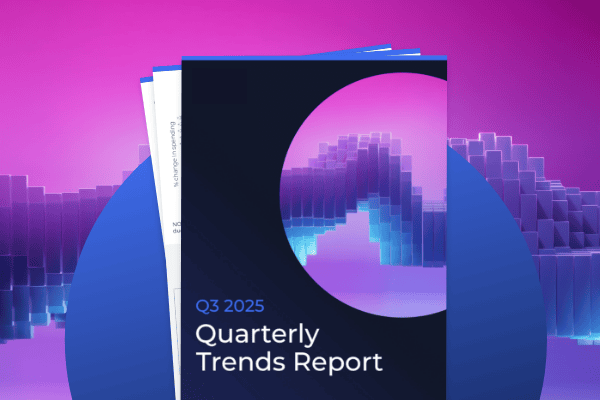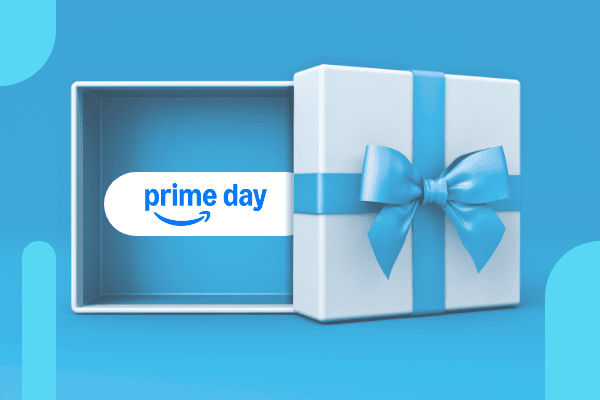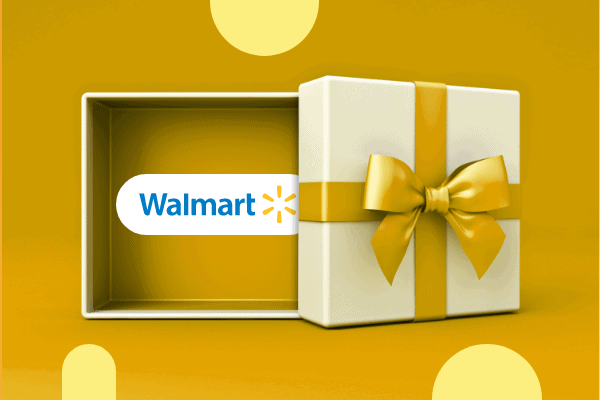Summary
Instacart Ads’ Category Share of Digital Shelf metric reveals how much visibility your brand truly commands by merging organic and paid impressions into a single benchmark. As Instacart evolves into a powerful retail media platform, this metric empowers marketers to act with precision. The growing maturity of retail media now enables teams to connect visibility directly to performance, sharpen competitive strategy, and make faster, more informed investment decision
Last updated: October 23, 2025
You could be outspending your competitors and still getting boxed out of the digital shelf. On Instacart, the first few products a consumer sees aren’t just suggestions, they are decisions made in real time. If your brand isn’t showing up in those moments, everything else, like the budget, targeting, and creative, fades into the background.
Instacart has quickly evolved from a delivery convenience into one of the most influential grocery retail media platforms. For CPG brands, it’s not just a channel; it’s where visibility, relevance, and consumer behavior converge. And as retail media matures, visibility on the Instacart shelf is becoming one of the most valuable signals in the mix.
Historically, advertisers have relied on media metrics, such as ROAS, impressions, and CPC, to evaluate performance. But those only tell part of the story. Shelf presence is shaped by more than just spend. It’s influenced by organic rank, catalog quality, and competitive dynamics.
That’s where Instacart’s new metric, Category Share of Digital Shelf, comes in. It merges organic and paid impressions into a single view of brand presence, helping marketers understand how much of the screen they really own during critical decision-making moments..
Micro-answer: Measure total visibility, not just ads.
What is Instacart’s “Category Share of Digital Shelf,” and what does it really mean?
Instacart’s shelf share blends organic rank and paid placement into one visibility metric.
Total shelf presence beats isolated KPIs.
Instacart’s Category Share of Digital Shelf aggregates impressions from organic and sponsored slots to quantify how much of the screen your brand truly owns during decisions—clarifying competitive strength and guiding investment beyond ROAS alone. According to Instacart Ads 2024, the metric functions as a business health indicator and supports faster, data-driven decisions.
Instacart defines the metric as follows: “Share of digital shelf is the percentage of category impressions your brand receives, benchmarked against other brands in its category.”
Unlike impression share or sponsored rank, this metric combines both paid and organic placements. It’s designed to reflect total brand exposure, not just campaign reach.
Picture this: a consumer types ice cream into the Instacart search bar. Four product slots appear. If two of those are from the same brand, regardless of whether they’re paid or organic, that brand holds a 50% share of the digital shelf for that interaction. Instacart aggregates these across all relevant impressions, giving marketers a true benchmark of visibility within the category.
That scope is what makes it so useful. It’s one of the only ways to evaluate real shelf presence in a space where organic and paid strategies often overlap. Whether a brand’s showing up because of algorithmic relevance or because they bid aggressively on a term, the outcome for the consumer is the same: that brand dominates the view.
Category Share of Digital Shelf captures that reality.
Why does Category Share of Digital Shelf matter for brand health and performance?
Visibility is a leading indicator.
Because the top placements capture outsized clicks, shelf share explains ROAS swings, pinpoints catalog or availability issues, and aligns teams on where to defend or attack. Instacart notes top three placements drive nearly 70% of sponsored clicks, underscoring why “owning the screen” wins the moment.
This new metric gives teams a way to measure something they’ve always cared about, but never had clean access to. Instacart notes that it “can function as a business health indicator and enable you to quickly identify trends and make data-driven business decisions.”
It helps contextualize changes that would otherwise feel opaque. A drop in visibility could indicate competitive disruption, fulfillment gaps, or creative fatigue. A sudden surge might reflect improved catalog coverage or successful ad flighting. Either way, this metric gives teams something to point to and plan from.
It also aligns with how consumers behave. Instacart reports that “the top three placements for sponsored product ads make up nearly 70% of all sponsored product clicks.” Shelf position isn’t symbolic, it’s functional. Brands that own the screen win the moment. Those that don’t often don’t get a shot.
And unlike traditional media KPIs, this one sits at the intersection of marketing, merchandising, and product. If you’re spending efficiently but visibility is dropping, it’s a sign to look upstream. If visibility is rising while spend is flat, maybe your catalog or organic relevance is doing more heavy lifting than you thought.
For teams managing large portfolios, Category Share of Digital Shelf also helps prioritize where attention is needed. Not every product can win the shelf. But knowing where you’re gaining or losing share helps focus investment in the right places.
How can marketers use Category Share of Digital Shelf right now?
Treat shelf share as an operational tool, not a vanity metric.
Benchmark, diagnose, monitor, plan, repeat.
Use shelf share to baseline visibility, find spend inefficiencies, watch category shifts, explain ROAS changes, and inform planning with partners—making it shared language across marketing, category management, and execs. Industry bodies are standardizing retail media measurement; see the IAB 2024 Guidelines for placement/reporting practices that complement shelf metrics.
Category Share of Digital Shelf isn’t a vanity metric. It’s a working tool. A way to pressure-test performance, understand patterns, and steer future planning. Here’s how leading marketers are using it.
Benchmark visibility across campaigns
Start with baselines. This metric shows whether tentpole campaigns, seasonality pushes, or always-on investments are actually increasing your screen presence or just shifting the mix. It’s a gut-check for effectiveness and a useful input for flighting decisions.
Spot gaps where ad spend isn’t delivering
If share is flat but budgets are up, that’s a signal. It could be an issue with product availability, creative fatigue, or under-optimized bidding. This metric highlights those inefficiencies before performance drops off entirely.
Monitor shifts in category dynamics
Category-level visibility shifts can signal rising competition or changes in Instacart’s algorithmic ranking. Monthly or even weekly shelf share trends help teams get ahead of challenges before they show up in lagging metrics like ROAS.
Diagnose ROAS swings with added context
A ROAS dip doesn’t always mean a campaign is failing. Sometimes, it’s just a visibility issue. By layering shelf share data into post-campaign reviews, marketers can isolate where the breakdown occurred—and whether paid visibility is driving new exposure or just replacing organic presence.
Bring shelf metrics into planning conversations
Shelf share helps bridge the gap between marketing teams and their partners, whether it’s retail buyers, brand managers, or cross-functional execs. It can support a JBP recommendation, unlock additional funding, or help explain past performance in clearer terms. Track market movements with recent industry research to contextualize shelf share trends across categories.
Used consistently, this metric becomes part of a team’s shared language around success—and a smart filter for where to focus next.
Conclusion: How can you drive a competitive edge on Instacart with shelf share?
Combine shelf share with competitive and retail data to prioritize moves.
Own the screen, then scale profit.
Teams that pair shelf share with competitive insights, inventory, and creative testing adapt faster than rivals—and compound advantage as retail media grows. Retail media is among the fastest-growing ad channels; analyses such as McKinsey 2024–2025 chart sustained momentum.
As new metrics like Category Share of Digital Shelf bring more clarity to performance on Instacart, there’s a growing opportunity to rethink how competitive visibility guides investment.
Skai’s Competitive Insights dashboard already helps marketers uncover where their brand stands across paid and organic placements, down to the keyword level. With flexible views across Instacart and other major retail media platforms, it’s easier to benchmark, analyze, and act. For cross-retailer benchmarking and orchestration, explore our retail media solutions to connect shelf visibility with activation and measurement.
If you’re looking to get sharper on competitive performance and more efficient with how you scale on Instacart, we invite you to schedule a brief demo to see our commerce media platform firsthand.
Related Reading
- Haleon leverages Shelf Intelligent Media to Boost ROAS– Competitive stock signals automated bids, improving ROAS and new-to-brand orders.
- Heinz UK and Dentsu: Shelf Intelligent Media + Skai on Prime Day
– OOS-driven bidding increased impressions, Page-1 share, and ROAS during a tentpole.
- PepsiCo unlocks over 80% new-to-brand ROAS with Amazon DSP
– Audience bid modifiers scaled NTB performance.
Frequently Asked Questions
Category Share of Digital Shelf is the percentage of category impressions your brand earns across paid and organic placements. It shows your true screen presence and helps track competitive visibility over time.
To boost Category Share of Digital Shelf, optimize both paid ads and organic ranking. This includes improving product availability, catalog accuracy, bidding strategy, and creative quality.
It matters because it links brand visibility with consumer decision-making. Higher share means more chances to capture clicks, drive sales, and stay competitive in crowded categories.
Glossary
Category Share of Digital Shelf — Percentage of category impressions a brand earns across paid and organic placements; Instacart’s visibility benchmark.
Impression share — Media KPI for eligible ad impressions vs. total eligible; useful for pacing/eligibility, not total visibility.
Digital shelf — The set of on-site search/category placements where products appear; visibility here drives clicks and sales. (NIQ 2025 highlights visibility’s rising importance in retail media planning.)
Top placement concentration — Disproportionate click share accruing to the first few placements; justifies defending page-1 positions. (Instacart 2025 notes nearly 70% of sponsored clicks come from top three slots.)
Competitive insights — Retail analytics connecting paid/organic presence to rivals’ moves, informing where to bid, fix catalog, or shift budget.
Retail media solutions — Platforms to activate and measure across retailers; useful to connect shelf metrics with campaigns.







